As a roman reenactor, for my equipment, I have two choices : make it myself, or buy it to someone more capable than I. The German craftsman Erik König is one of those men with gold in their hands. He is well known from us at LEG VIII AUG. I have no pretension about being a swordsmith, I think I would need years of practice before getting something good. That’s why I choose one of his swords, Erik is the best in his field, and I wanted exactly that roman sword.
English gladius
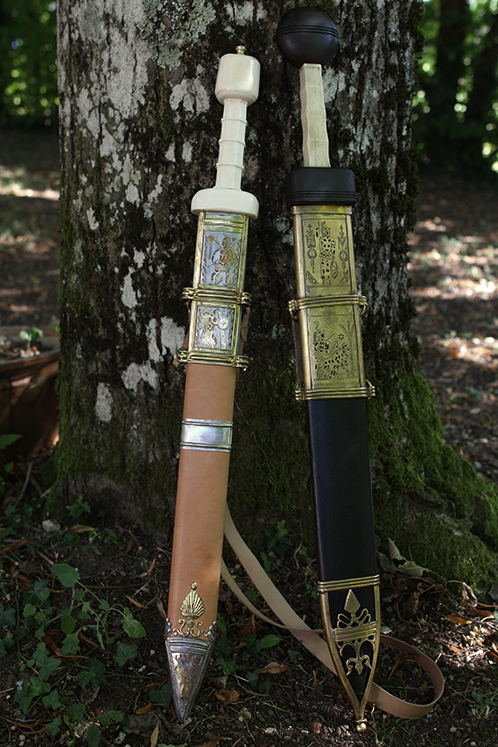
In the left, Erik König’s gladius. At the right, Deepeeka’s gladius.
Erik König complete the bits of gladius that weren’t found in England with classical pompei gladius parts. If I’m correct, parts of the scabbard, like the chape, were rebuilt with pompei inspiration, from Mainz findings. The final result is, from my point of view, fabulous.
I’m enthusiast but it’s true that I was used to a simple Deepeeka gladius, much worse, but also much, much more cheaper. Deepeeka is a company based in India, specialized in crafting historical artifacts at low cost. Quality have a price, as we say. The König gladius is simply like the real thing: lighter, very well crafted and well balanced, it’s a real piece of Art. The pictures of it are worth a thousand words :)
But with use, I had some troubles though. The little iron plate that you can see at the middle of the scabbard can be annoying. It touches the mail of the Lorica Hamata (the armour), breaking the little nails used to fix the plate. We’ll find a solution with Erik, who proposes to repair it and reinforce it. Those kind of disagreements are common when reenacting, since only practice can put to the test “modern” gladiuses.
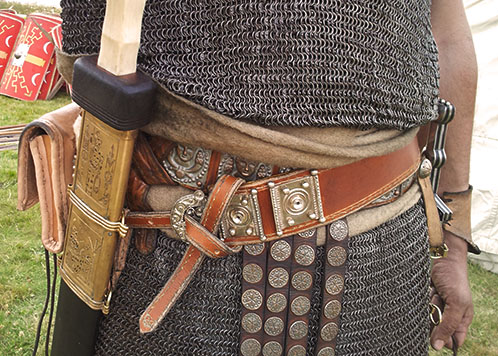
Deepeeka gladius. I'm grateful to Deepeeka for it, it helped me to start reenacting.
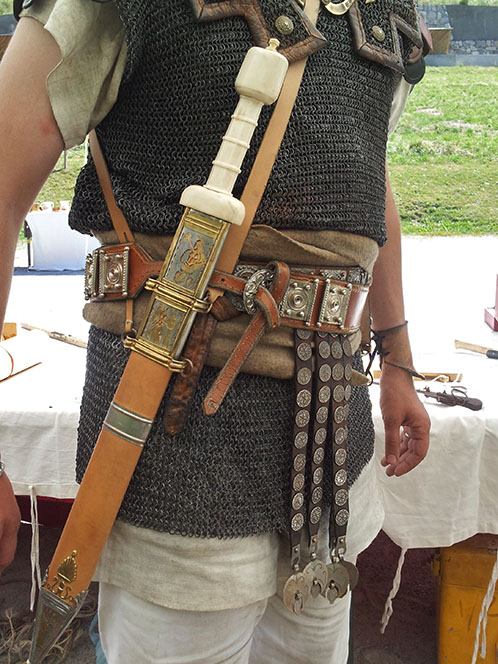
Roman sword, with his harness. Do I look good with it? :p
The blade is made of forged iron, the hilt is made of bone. The scabbard is made of wood, covered with leather. The decorative plates of the scabbard are made of tinned brass. Everything is made by hand.
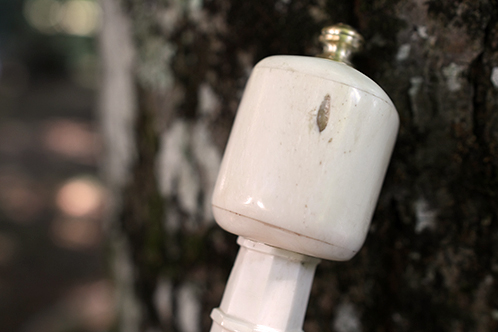
Gladius pommel, made of bone. As you can see, it’s not regular, it’s a real bone!
The gladius is light, yet solid. It’s a pleasure to hold it, it’s well balanced. I don’t even speak about drawing it from the scabbard! It will never be stuck on it as it happened all the time with the deepeeka.
Pictures of English Gladius
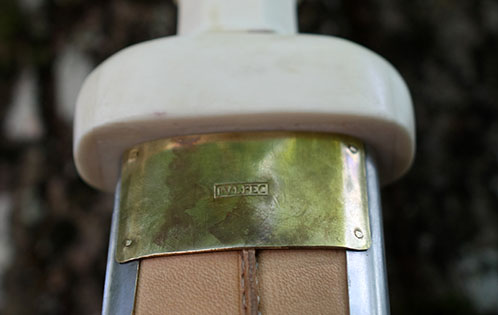
Reverse of the scabbard, with König’s mark on the brass plate.
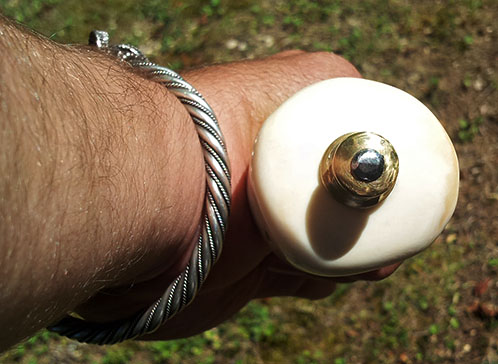
It’s a pleasure to hold this sword. Everything looks authentic.

I think I can time travel to an ancient legion : I will not be ashamed of my equipment
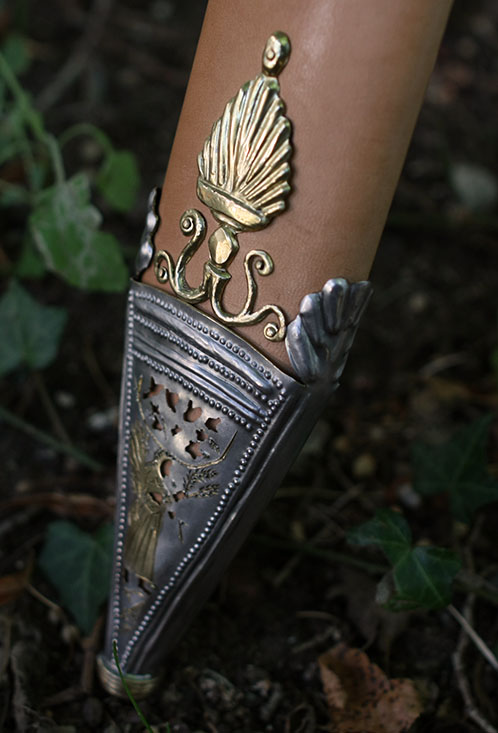
Chape of scabbard. The work is very precise.
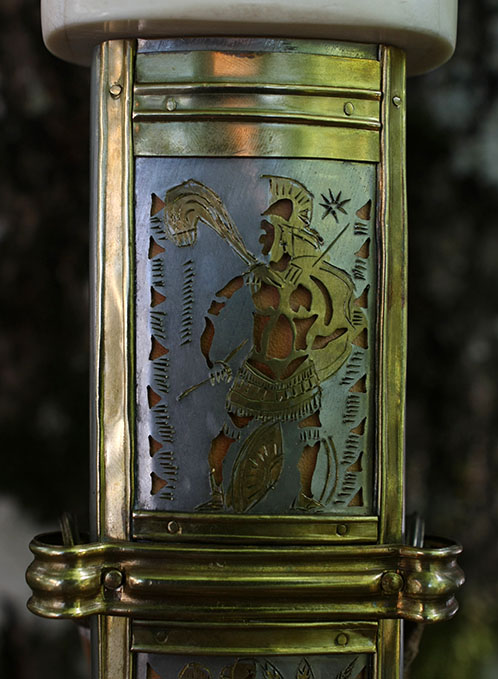
Tinned brass or just brass, in order to have two colours in this representation
of a warrior. Look at the nails!
I’m really proud of wearing such a replica of an ancient roman weapon, can you see it? :)
 In Aciem
In Aciem
Very nice. I’ve seen Erik working and he is extremely methodical. His work does not come cheep but it is worth every penny. Having improved your kit so much by replacing your sword, you might now consider making a little improvement to your other sidearm as well. You can do this by removing the inaccurate leather straps your pugio is suspended with. These are not seen in any Roman sculptures which show pugios. Just lace the upper suspension rings tightly to the frog buttons with leather thonging so that the upper suspension rings are in line with the belt leather, as seen on Roman depictions. The frog buttons should almost touch the upper suspension rings. You will find this very stable. You may need to move your frogs to bring them closer together, but having invested in a sword from Erik Koenig, you owe it to your pugio to make it look more accurate too.
Crispvs
Thanks Crispvs, I will do so :) I also need a new pugio, but I’m still waiting for my helmet, also by Konig. He works very nicely indeed, but one must be patient: almost 2 years, and still counting.
Thank you for your kind comments. We are updating our range of Roman swords- please check with the closest distributors